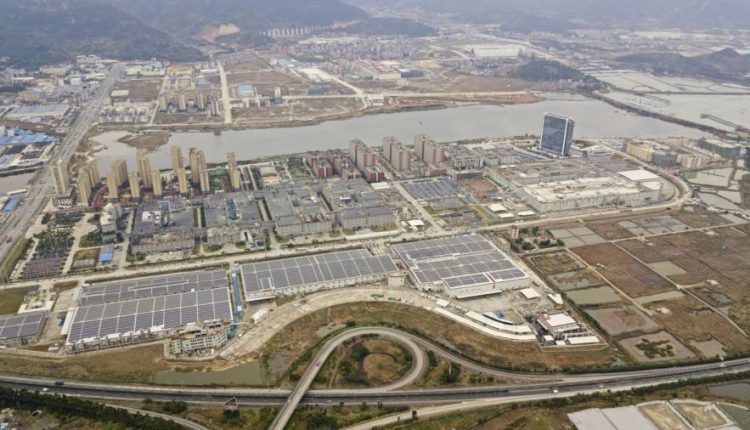Receive free Batteries updates
We’ll send you a myFT Daily Digest email rounding up the latest Batteries news every morning.
China is building battery plants far beyond levels needed to meet domestic demand for electric cars and grid energy storage, underlining vast state subsidies and unchecked bank lending that are expected to underpin the international expansion of Chinese manufacturers.
Production capacity at China’s battery factories is expected to reach 1,500 gigawatt hours this year — enough for 22mn EVs — more than twice demand levels, forecast at 636GWh, according to data from CRU Group, a research firm.
Battery manufacturers are following a pattern exhibited in other industries such as steel, aluminium and solar panels, industry executives warned, where Chinese companies benefit from subsidies to take a huge share of the global market and squeeze out competition internationally.
“We are worried,” said Olivier Dufour, co-founder of Verkor, a French battery start-up backed by Renault. “What I see there is very similar to what I knew in aluminium. It’s more than preoccupying,” added Dufour, a former executive at mining company Rio Tinto.
Regions of China are racing against each other to take advantage of government subsidies and become production epicentres for batteries in anticipation of surging future demand, risking a glut of production.
The battery production rush has concerned Chinese leader Xi Jinping, who warned the industry in March about the risk of over-expansion and the potential for a boom and bust cycle, which has befallen some fast-growing Chinese industries, including property and solar.
Sam Adham, head of battery materials at CRU Group, said Chinese battery production at roughly 550GWh last year outpaced the 450GWh that went into end products and were exported. “Many manufacturers are overproducing and continuously building up their stocks,” he said.
Based on announcements to build battery plants, the overcapacity is set to surge to nearly four times what the country needs by 2027, its data shows, and twice the volume of what China’s entire car fleet would need to go completely electric by 2030.
According to one senior western motor industry executive in China, manufacturers’ expansion plans are “totally unrealistic” and have come despite hopes of industry consolidation. Now, as overcapacity issues worsen, there is a risk that more companies turn to exports, in line with the solar industry, and add to geopolitical tensions between China and the west.
“Will they dump them on other markets? We don’t know. But it is certainly a possibility,” the person said.
In a presentation to EU officials seen by the FT, Verkor warned that a 500GWh supply gap in Europe in 2030 could be “compensated” by 1,100GWh of overcapacity in China.
Patrik Andreasson, vice-president of strategy and sustainability at Northvolt, the Swedish battery manufacturer, warned that Europe’s grid energy storage sector is particularly vulnerable to Chinese exports. “A large import of Chinese, low-budget batteries would decrease” Europe’s sustainability ambitions and “likely be seen as a strategic mistake”, he said.
While China is likely to face obstacles in flooding the global market with battery exports, its battery makers are being incentivised to set up locally because of protective policies and incentives in Washington and Brussels.
Despite bans and restrictions on its technology, China’s battery manufacturers including CATL, the world leader with 37 per cent global market share, are planning to expand into the US and Europe.
CATL — the only battery maker making full use of its factories in China — signed a deal in February with Ford to license its technology for use in the US carmaker’s Michigan plant, while AESC is set to play a key role in Tata’s UK battery factory.
Some argue overcapacity fears are overblown as batteries are poised to play a key role in China backing-up electricity from intermittent renewable energy during a historic transition from coal. Goldman Sachs has forecast that China’s battery energy storage requirements will increase 70-fold by 2030.
However, as it stands, the average estimated utilisation rate, which measures actual battery production versus the capacity to which a plant is designed to produce at, is 55 per cent, CRU analysis shows.
In contrast, European battery plants cannot receive debt financing unless they can guarantee a rate above 70 per cent, says Adam Panayi, chief executive of Rho Motion, a battery consultancy.
Additional by Gloria Li in Hong Kong
Read the full article here

